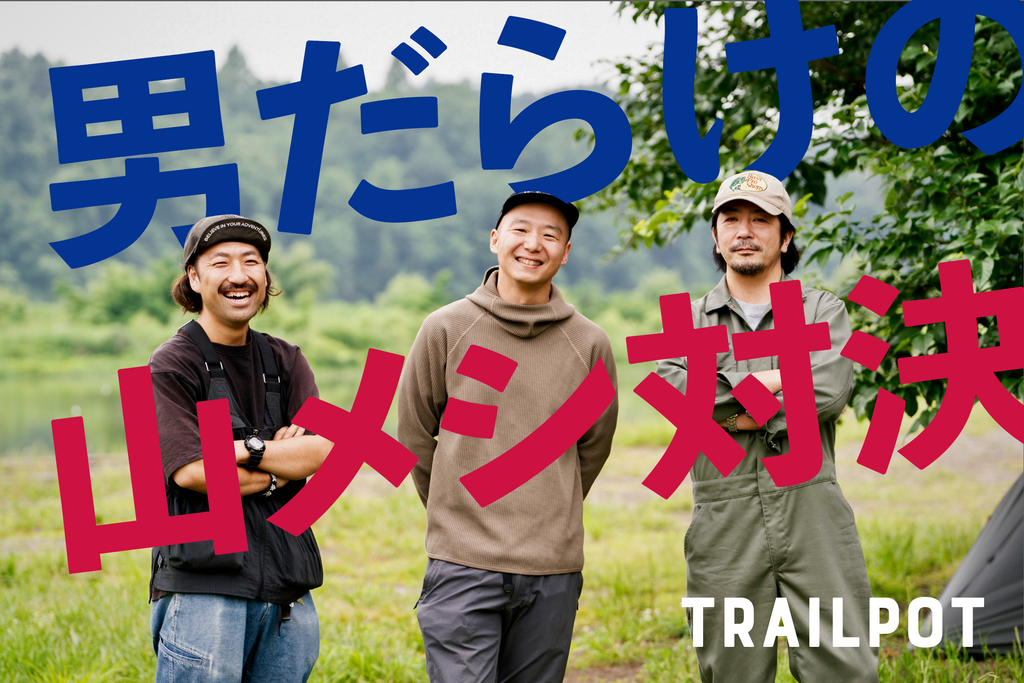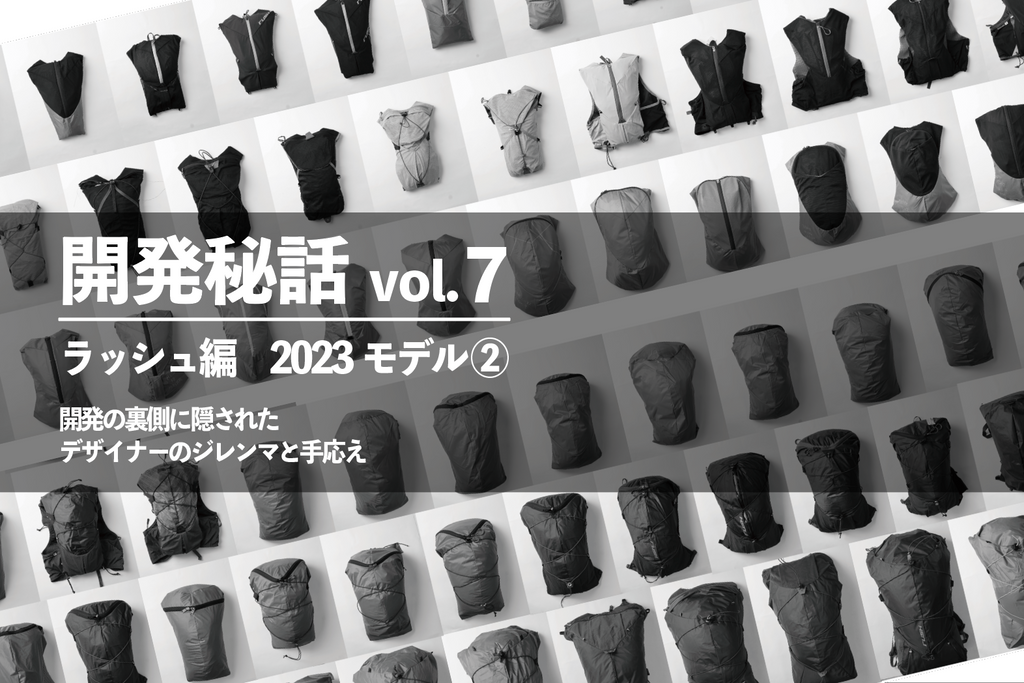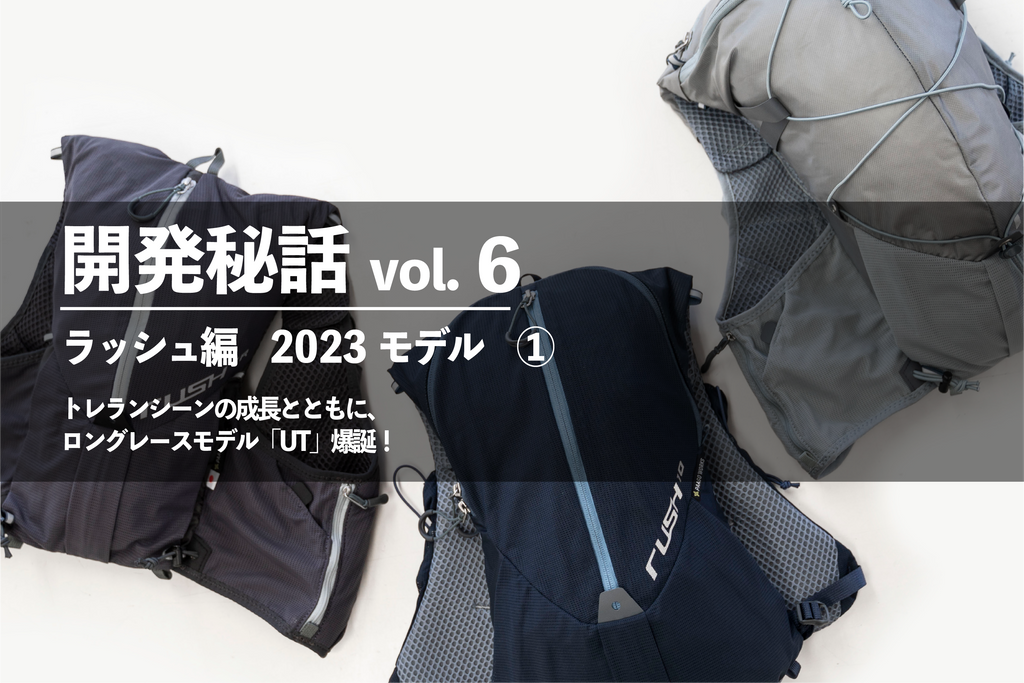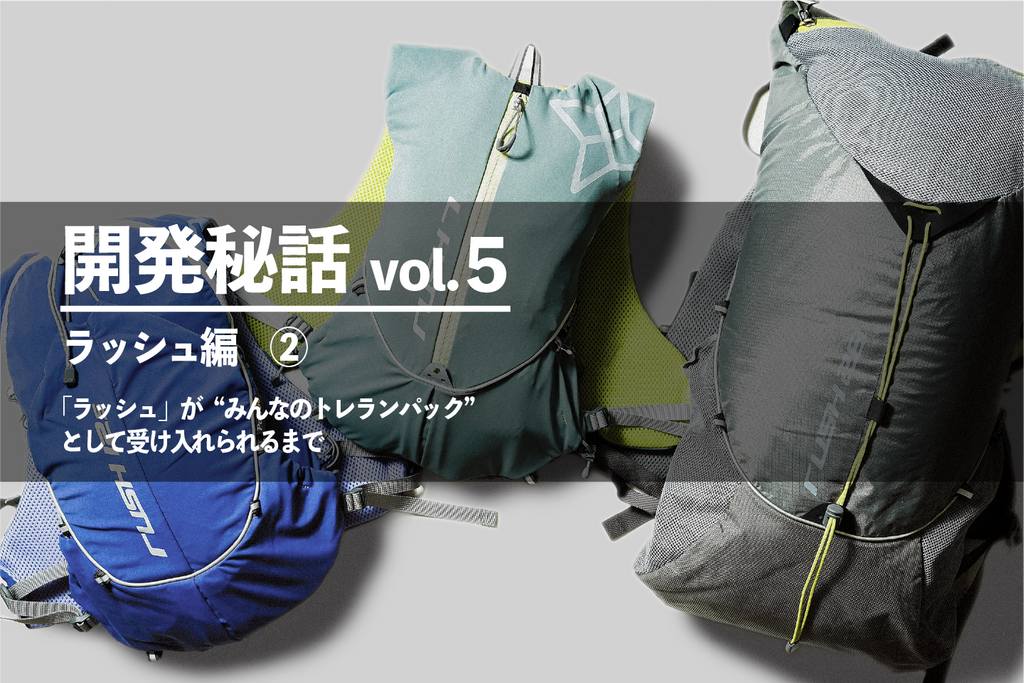MAGAZINE
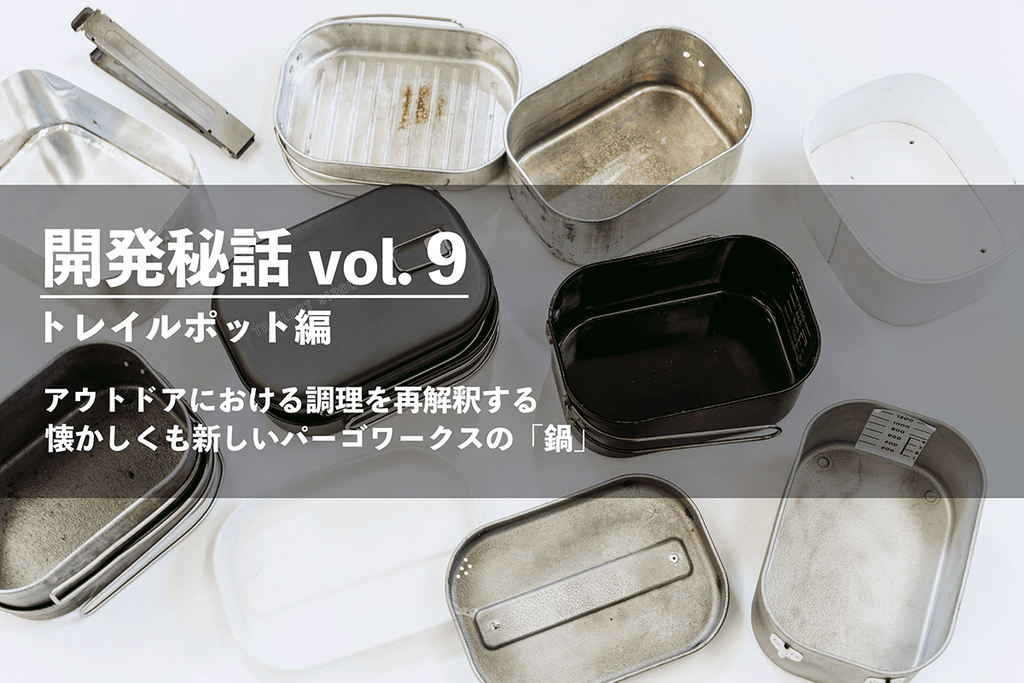
Product History Vol.9 Trail Pot
Reinterpreting outdoor cooking with the nostalgic yet new Pargoworks "pot"
Pargo Works' first pot series, the Trail Pot, is a square-shaped model with a large capacity of 1200ml, compared to the typical round shape of outdoor pots. When it was released in 2023, the first batch was quickly sold out. It has been highly praised by users, with comments such as "It broadens the range of cooking" and "It's indispensable for cooking for multiple people on mountain trips." But why did Pargo Works, which has mainly developed backpacks and shelters, create a pot? We will look into the background and the thoughts that went into its development.
— I think that "Pargoworks' first pot" was an impactful topic in the sense that it expanded the product category. What led to its development?
I think the big factor is the presence of the fire pit "Fire Stand" that was released in 2018. When we made a lightweight and compact fire pit so that hikers could also enjoy bonfires, we also wanted to make a pot that goes with it. The current product is the second generation, but the first model was a cross frame type, so a round pot could only be placed in the center. Moreover, if you increase the diameter of a round pot, the capacity also increases. Under these constraints, we began looking for something more compact and easy to store, and started looking for a square pot.

At the same time, when I looked back at my outdoor pots, I remembered a square pot from Morita that I had been using for many years. It was made of lightweight aluminum and was shaped to fit instant noodles perfectly. It had a black knob and looked cool like a camping tool from the past. In that sense, I had a special attachment to the square pot.
Considering the boom in UL hiking at the time, titanium, round, and minimal capacity pots were popular. But if you're going camping and enjoying cooking, or hiking with multiple people, it's definitely easier to use one with a certain amount of capacity. I wanted to make a pot that was unique to Pargo, without being limited to UL. Or rather, I didn't see the point in making a round pot. There were plenty of good products on the market that were just the right size to fit gas cartridges or were easy to stack. I thought, why do we have to do it with Pargo?

There is another reason for making it square, and that is that it is assumed that ingredients will be purchased at a "convenience store". If you look at the style of camping in Japan, you often buy ingredients at convenience stores one way or another. When going camping or hiking, everyone quickly uses what they buy at a convenience store. "Isn't that real?" I wanted to respond to that need. In the case of the Trail Pot, the symbolic thing is that it is the size that can fit "Sato's rice" perfectly. It fits well in packing and can be boiled in hot water.

So, I just made a lot of prototypes. I made it by hammering aluminum plates. Like a bento box (laughs). Pargo's product development starts with thoroughly exploring the possibilities of design. Unlike backpacks, Kocheru cannot change its size or shape because the mold is made during manufacturing. In other words, minor changes cannot be made. Of course, we could remake the mold, but that would cost hundreds of thousands of yen. So, we decided on the specifications while considering stacking and accessories to be combined, and thinking about how the product would develop in the future. The Trail Pot S900 (small model), scheduled to be released in the summer of 2024, was also conceived at this point.

By the way, the fact that the factory that ordered the fire stand also contracted to manufacture outdoor cookware and metal pots was a big support for the development. We went to the headquarters in China to talk to them and decided to work together. Finding a factory is also important for Pargo's manufacturing, and it wouldn't start without a reliable partner.
- It's square, can be used by multiple people, and is the perfect size for convenience store food. Having reached this point, what's the next step in development?
I think it's the handle. At first, I was aiming for a bar handle type that grips the edge of the pot. Since the parts are separate, it's easy to stack and there are fewer points of failure. However, I found out that there were various problems with it. One was that it damaged the paint on the inside of the pot. There is a version that has rubber at the clamping point to prevent scratches, but there were also problems with the pot itself. The metal plate used in the Trail Pot is 1mm thick, but when pressed it becomes about 0.9mm thick. Moreover, the aluminum becomes soft due to the heat treatment of the fluorine coating. In other words, I found that a bar handle type was not realistic in terms of the strength of the main body as well.


Another issue was durability. Unlike the round type, the square type has to be inserted into the same place every time, so the safety of long-term use was questionable. In fact, when tested over a bonfire, it bent. Of course, we considered making the board thicker and eliminating the fluorine coating, but that would have been counterproductive. The basic concept was to make a tool that was light and simple. Another issue we considered was the risk that the pot would become unusable if the bar handle was lost or forgotten to be brought.

On the other hand, I also considered using a handle like a mess tin. However, this is difficult to use because the fulcrum is lowered for the size of the trail pot. I could reverse the fold, but it would tip over if I didn't make a proper safety mechanism, so it's not OK.
As a result, I ended up with a butterfly shape. The handle is not made of aluminum, but stainless steel, considering that it will be kept on the fire for a long time. Aluminum has good thermal conductivity and gets too hot to hold in your hand. It's light, though. I made the handle as long as possible so that it could be placed away from the center of the bonfire.
-- It seems like there was a lot of trial and error involved with just a single handle. Are there any other stories from the development of the Trail Pot?
I think it's the "scale". The amount of water is fine, but the problem was the "rice" marking. The Trail Pot can cook up to 2 go of rice, but is the scale just for rice, or for adding water, and whether to add "go", etc. (lol). Some old pots have "rice" and "water" written on them. But in the mountains, you need to adjust the amount of water depending on the air pressure and temperature, so you can't say this is the correct amount. So in the end, I made it so that only the amount of rice is indicated. By the way, there are scales up to 4 go, but in reality, about 2 go is the maximum.


Also, should the ribs be cut vertically or horizontally? Vertical is probably better for strength, but horizontal is better when you think about the flow of oil and the browning when cooking. Horizontal is better when cooking long things, like asparagus or shishamo (lol).

We discussed adding "feet" to the bottom of the pot. I thought it would be good if it had feet so that heat would not escape easily when placed on the ground, and it would also be good so that it could hook onto the grate without slipping when placed on a fire stand. However, this idea was scrapped when a friendly outdoor chef commented that "it's difficult to clean the inside thoroughly" (laughs).

In addition, there are many other easy-to-use features, such as a hook on the lid and a hole for draining water. You will notice how convenient it is as you use it. By the way, the product name is "1200", but this is the capacity when full. Originally, I was aiming for a pot that could boil 1000ml, or 1L, but with some leeway, the maximum capacity became 1200ml. I actually wanted to call it 1000 because it's a nice round number. However, I followed the convention in the pot industry of indicating the amount of water to be poured evenly. As an aside, the actual capacity is about 1300 (lol). Please forgive me, as this was my first time making a pot.
— Development of the Trail Pot began in 2018, and it will be released in 2023. It took more than five years, and in that time products like the Buddy and Ninja Shelter have been released. Why did it take so long to develop?
Making prototypes at the factory didn't go well. At first, I thought the factory was good at making pots, but no matter how many times we tried, it just didn't work. The polishing of the scratches that occur when removing the pot from the mold, the anodizing of the outside, and the fluorine coating on the inside all didn't meet the quality we expected. Then the COVID-19 pandemic hit, the factory stopped, and the people in charge at the factory were changed frequently. The response got worse and worse, and development was halted. I heard later that it was the first time they had made a square pot (laughs).

In the end, I asked a factory I knew through a connection to move the molds and successfully produced the product. To be honest, the difficulties in manufacturing were enormous, and I thought about giving up on the release of the Trail Pot many times. But somehow we managed to release it, and it has been well received. I finally felt like it was worth it. Creating something new is always difficult, but that's all part of the fun of development.



